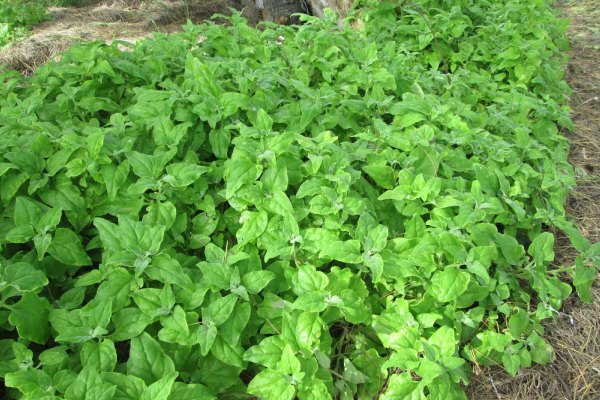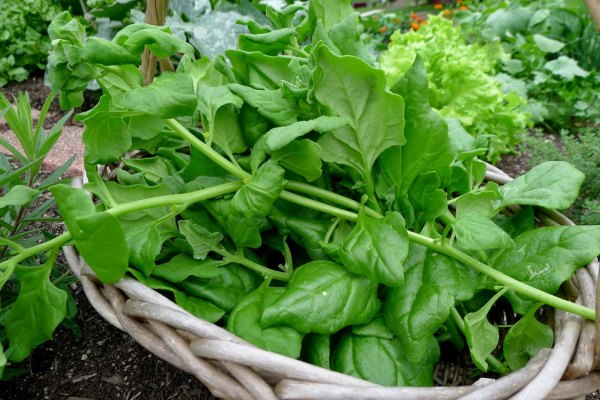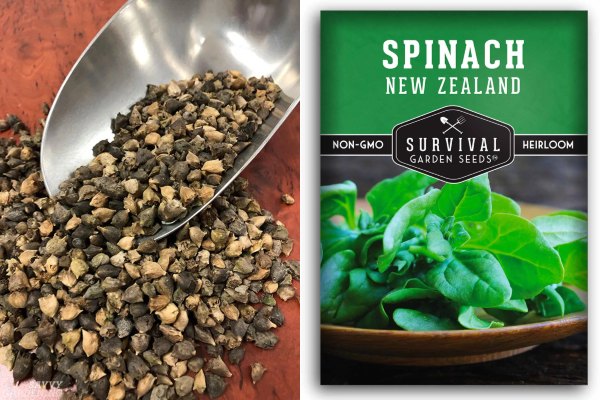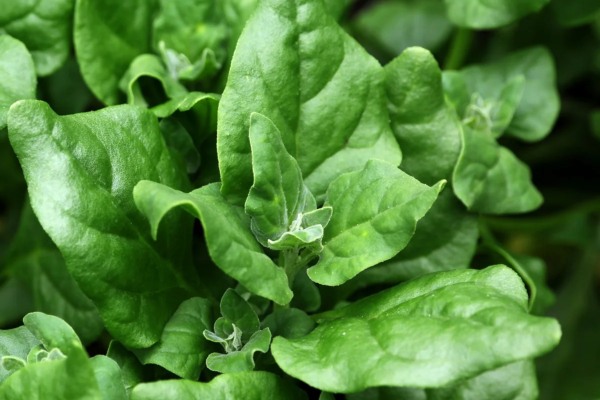New Zealand spinach, whose scientific name is Tetragonia tetragoniodies, is a member of the Aizoaceae family. It is a leafy green vegetable that generally has its origin in Australia, New Zealand, and parts of Asia. With its name, readers should not confuse it with the normal spinach, as it is not botanically related. Nevertheless, they are quite similar. New Zealand spinach resembles common spinach. Also, its flavor is milder and similar to regular spinach, so it can be used in most recipes as an ingredient. Therefore, this hardy and versatile herb is considered of heirloom vegetable status and highly valued for its robustness.
Description
Plant Type: Flowering Plant
Scientific Name: Tetragonia tetragonioides
Family: Amaranthaceae
Other Name: New Zealand spinach, Warrigal greens
Genus: Tetragonia
Species: T. tetragonioides
Season: Spring and Fall
Days to Maturity: 50-60 days
Native Area: New Zeland, Australia, and Eastern Asia
What are the characteristics of New Zealand Spinach?
New Zealand is a hardy leafy green vegetable with wonderful nutrition. Its soft leaves are slightly thick and grow along the stems. They have an oval to triangular shape with a pointed tip. Green leaves look shiny due to tiny salt-retaining hairs on their surface, known as salt bladders or trichomes. Such hairs hold additional salt, which allows a plant to grow well on salty soil while still performing photosynthesis. The older the plant is, the more it accumulates salt, making the leaves taste bitter and salty. Similarly, it produces small flowers in the leaf axils which later turn into the distinctive four-pointed fruit.

On the other hand, New Zealand Spinach is the opposite of regular spinach when it comes to growing conditions. Unlike common spinach, it does well only in warm weather and fails miserably in cool temperatures.
Nutritional Benefits of New Zealand Spinach
- New Zealand spinach is rich in calcium for strong bones and teeth, vitamin A for healthy organs, vitamin E to reduce inflammation, and vitamin C to boost your immune system.
- It also contains vitamin K so that wounds will heal faster and iron to make hemoglobin for the carriage of oxygen in the blood.
- Apart from these nutrients, New Zealand spinach is packed with manganese, folic acid, B-complex vitamins, Phosphorus, and riboflavin.
- However, it does have a high content of oxalates in the form of oxalic acid, which can be harmful. These may be reduced by cooking the leaves to minimize possible risks.
Uses of New Zealand Spinach
New Zealand spinach has a mild, slightly salty taste that is best when lightly cooked with tender leaves. To prepare, start by soaking the leaves in cold water for 30 minutes or blanch to reduce oxalates. Once ready, you may use it in pesto, sandwiches, pasta, and gnocchi. Its sturdy texture makes it a great substitute for regular spinach in frittata, casseroles, and stir-fries. Additionally, it pairs well with rich dishes flatbreads, and spanakopita. New Zealand spinach further adds flavor to soups, stews, and curries too.
What are the best growth and care tips for New Zealand Spinach?

Location
New Zealand spinach needs to be planted in sunny shade. Similarly, this plant prefers loose, warm, humus-rich soil that has good moisture retention. Similarly, sandy soil with good drainage and a pH level between 6.8 and 7.0 is considered ideal for New Zealand spinach. You can add compost before planting into the soil. Slow-release fertilizers can be used to boost its growth.
Sow Seeds
Soak New Zealand spinach seeds in water the night before to increase their chances of sprouting. After that, sow the seeds directly into an empty, frost-free garden about 12 inches apart.
Temperature and Humidity
New Zealand spinach thrives in warm climates, favoring heat and sunlight. It is highly susceptible to cold temperatures and cannot endure conditions below freezing (0 °C).
Water
New Zealand spinach is renowned for its drought resistance but needs regular watering for the best flavor and vigorous growth. Especially during hot, dry summers, make sure the soil remains moist but not waterlogged.
Fertilizer
Just like common garden spinach, New Zealand spinach doesn’t need a lot of extra fertilizer. However, if you notice that the leaves are pale or the growth is slow, you can give it a boost with some balanced organic fertilizer.
Pests and Diseases
Generally, New Zealand spinach is disease and pest-free. But it can occasionally affected by aphids and leaf miners. To prevent such pests, you may use organic insecticidal soap or neem oil which ensures good circulation and prevents fungal disease.
Harvest
Harvest New Zealand spinach when the plants are about 6-8 inches tall. Always get the outer leaves off first to allow the inner leaves to grow on. The plant will thereby remain fit and healthy with continuous production of leaves. Well, repeated harvesting not only supplies you with continuous fresh spinach but also urges the plant to form new leaves.
Propagation Methods for New Zealand spinach

Seed Propagation
To propagate New Zealand spinach from seed, start by harvesting seeds in autumn. Look for brown seeds that are easy to collect. After gathering them, dry them thoroughly in a cool, dry, dark place. By March, they will be ready for planting. For quicker germination, soak seeds in water for 24 hours before planting. When planting, sow seeds about half an inch deep in loose, fertile soil enriched with organic matter. Space rows 3 feet apart and thin seedlings to 12 inches within rows. This spacing ensures plants have enough room to grow well. Following these steps will promote optimal growth for your New Zealand spinach.
Cutting Propagation
To propagate New Zealand spinach through leaf cuttings, start by selecting a healthy leaf. Use a sharp, clean knife to cut the leaf carefully so it stays whole and undamaged. Lay the leaf flat on slightly damp soil, making sure the bottom touches the soil. Keep the temperature around 25°C and give it bright, indirect light. With good care, you should see a new bud sprouting from the base of the leaf in one to two weeks.
Conclusion
In summary, New Zealand spinach, or Tetragonia tetragonioides, is a hardy, nutrient-rich leafy green with a mild, slightly salty flavor that can be used similarly to common spinach in various recipes. Although botanically unrelated to traditional spinach, it is an excellent versatile alternative for cooking and thrives well in warm climates. Properly cared for, New Zealand spinach will grow and produce a steady supply of fresh greens in your garden if properly taken care of, including proper watering and soil suitability, with careful management of pests. This hardy plant is perfect for any garden, grown from seeds or cuttings.
Also read Nutrient-Rich Harvest: Top 10 Leafy Greens for Your Garden
Frequently Asked Questions
1. How is New Zealand Spinach different from Traditional Spinach?
New Zealand spinach and Traditional spinach are not botanically related. However, New Zealand spinach resembles common spinach. Its flavor is milder and similar to regular spinach, so it can be used in most recipes as an ingredient.
2. What care tips should I follow to ensure healthy New Zealand spinach plants?
For healthy New Zealand spinach, water consistently, provide partial shade, use fertile soil, space well, and remove weeds regularly.
3. When can I expect to harvest New Zealand spinach leaves for consumption?
You can typically harvest New Zealand spinach leaves within 50-60 days after planting.
